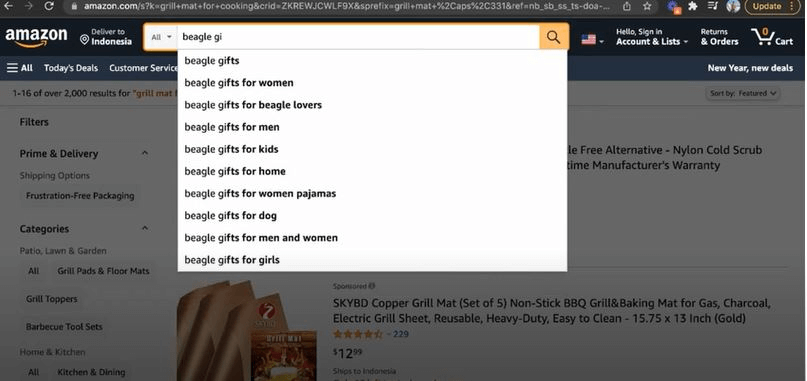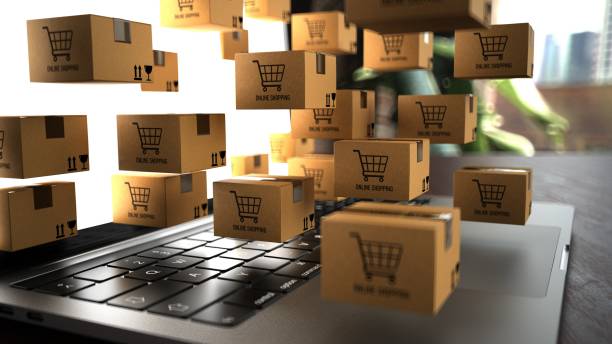Welcome here. Are you eager to know how to sell on Amazon without inventory? If so, this blog has got you covered.
Selling without inventory has recently gained much traction. This model is centered around three main strategies: Dropshipping, Amazon FBA, and FBM.
In the present blog, I will elaborate on these strategies, exploring their benefits and any limitations they may have. I will also share some unique tips for selling on Amazon without inventory.
Alright, let’s get started.
Drop shipping: Partner With Suppliers
Drop shipping is a corporate model that allows you to sell products without keeping physical inventory. Instead of stocking items yourself, you partner with suppliers who handle product storage, packaging, and shipping.

Now, here is some detail about how Drop shipping works.
Product Selection
The first step is identifying the products you want to sell. It involves thorough market research to determine what items are in demand and align with your target audience’s preferences.
Supplier Collaboration
Once you’ve chosen the products, you have to partner with reliable suppliers. These suppliers should be willing to provide Drop shipping services, which means they will hold the inventory and fulfill orders on your behalf.
Listing Creation
With your supplier relationships in place, you create product listings on your chosen platform, such as Amazon.
These listings should include detailed product descriptions, high-quality images, pricing information, and other relevant details.
Supplier Fulfillment
Once you receive an order, you forward the necessary information to your supplier. The supplier then picks packs and ships the product directly to the customer.
You can also work with the supplier to use customized packaging or branding to create a consistent customer experience.
Customer Service
While your supplier handles the logistics of fulfilling orders, you remain responsible for customer service. It includes addressing customer inquiries, providing order updates, and solving any issues that may arise.
Perks of Drop shipping
Now, I will discuss why one should opt for Drop shipping:
Low Initial Investment
Drop shipping eliminates the need for a significant upfront investment in inventory. So, it’s an attractive option for those who want to start an e-commerce business with limited capital.
Scalability
Since you are not constrained by physical inventory, you can efficiently scale your business by adding new products to your online store.
Location Independence
Drop shipping allows you to run your business from anywhere with an internet connection. This freedom level is handy for those who value remote work or want to operate a business while traveling.
Limitations of Drop shipping
However, Drop shipping also comes with its limitations:
Lower Profit Margins
While Drop shipping offers convenience, it’s worth noting that the ease of entry can lead to higher competition. With many sellers offering similar products, it can be challenging to maintain high-profit margins.
Dependence on Suppliers
In Drop shipping, the business success is closely tied to the suppliers. Late shipments, quality issues, or other supplier-related problems can directly impact your customer’s experience.
Amazon FBA: Let Amazon Handle Everything
Amazon FBA (Fulfillment by Amazon), a service provided by Amazon, simplifies the entire online selling process.
With Amazon FBA, you can leverage Amazon’s vast network of fulfillment centers to store, pack, and ship your products directly to customers.
Here’s a breakdown of how Amazon FBA works:
Product Preparation and Shipment
As a seller using Amazon FBA, your first step is to prep your products for shipment to Amazon’s fulfillment centers. Once your products are ready, you ship them to Amazon’s designated fulfillment center.
Inventory Storage
Upon arrival at the fulfillment center, Amazon handles the storage of your products. Your items are added to Amazon’s inventory system, and you can monitor the quantities and status of your products through your seller dashboard.
Shipping and Delivery
Amazon FBA offers various shipping options, including standard and fast shipping. Depending on the customer’s location and the shipping option selected, Amazon ensures prompt delivery to the customer’s doorstep.
Customer Service and Returns
Amazon’s customer service team handles customer inquiries, order tracking, and returns on your behalf.
Benefits of Amazon FBA
Now, I will discuss some unique benefits of Amazon FBA:
Time-Saving
With FBA, Amazon handles all time-consuming tasks like packing, shipping, and customer service. This way, it allows you to focus on other aspects of your business.
Prime Eligibility
Prime members often prefer products fulfilled by Amazon due to the quick and reliable shipping options available to them.
Global Reach
Amazon’s vast fulfillment network enables you to reach customers across different regions and even internationally.
Customer Trust
Amazon has a reputation for reliable shipping and customer service. It can help build confidence among customers and lead to higher sales.
Navigation Cost of Amazon FBA
While Amazon FBA has many advantages, it comes at a more significant cost.
Fulfillment Fees
Amazon charges fees for using FBA services, including storage fees and fulfillment fees per order. These costs should be factored into your pricing strategy.
Storage Costs
If your products remain in Amazon’s warehouses for an extended period, you may incur additional storage fees.
Amazon FBM: Take Control of Your Business
Amazon FBM (Fulfilled by Merchant) is a selling method on Amazon where the responsibility for order fulfillment rests on the seller rather than Amazon’s fulfillment centers.
With Amazon FBM, you maintain control over the entire process, from storing inventory to packing and shipping orders to customers. This
Now, here is a detailed explanation of how Amazon FBM works:
Inventory Management
As an Amazon FBM seller, you are responsible for storing your inventory in your warehouse or storage facility. It gives you direct control over your stock levels and storage conditions.
Product Listing
Similar to other selling methods, Amazon FBM requires you to create product listings for the items you want to sell. These listings should include detailed product descriptions, high-quality images, and accurate pricing information.
Shipping Options
As the seller, you have control over the shipping options you offer to customers. You can choose from various shipping carriers and methods to ensure timely and cost-effective delivery.
Advantages of Amazon FBM
Now, here are some advantages of Amazon FBM:
Cost Management
Since you’re responsible for shipping and storage, you can have a clear understanding of your costs. This way, it can help optimize your expenses.
Brand Consistency
You can maintain consistent branding and packaging throughout the entire customer experience. This way, it can enhance your brand’s recognition and reputation.
Limitations of Amazon FBM
However, Amazon FBM also has some limitations to consider:
Time-Consuming
Order fulfillment, inventory management, and handling customer service inquiries can be time-consuming. These things might become a challenge as your business grows.
Shipping Speed
While you have control over shipping, FBM might not always offer the same fast shipping options as Amazon FBA. This could impact customer expectations and satisfaction.
Operational Complexity
FBM requires hands-on management of logistics. It can be challenging, particularly if you’re new to e-commerce or have limited resources.
How to Choose the Right Business Strategy?
Now, Here is a step-by-step guide to help you choose the right strategy:
Consider Your Resources
Consider your available resources, including financial investment, time, and personnel. Different strategies require varying levels of investment and management.
Control vs. Convenience
Determine how much control you want over the fulfillment process. If you value convenience, Amazon FBA might be a good fit. If you prioritize customization, Amazon FBM could be the way to go.
Customer Experience
Think about the customer experience you want to provide. Amazon FBA offers reliable shipping and customer service, which can enhance customer trust. With Amazon FBM, you have more control over branding and packaging.
Additional Tips for How to Sell on Amazon Without Inventory
Now, here are some additional tips to help you navigate this path successfully:
Niche Research
Conduct thorough research to identify a niche with demand but not oversaturated with sellers. Finding a unique angle can give you a competitive edge.
Supplier Due Diligence
Vet suppliers rigorously. Look for suppliers with a reliable track record regarding product quality, shipping times, and communication.
Quality Product Listings
Craft informative product listings. Use clear images, detailed descriptions, and benefits that resonate with your target audience. Well-optimized listings improve your chances of attracting and converting customers.
Optimize for Mobile
A significant portion of online shopping happens on mobile devices. Ensure your listings and website are mobile-responsive for a seamless user experience.
Marketing and Promotion
Consider using Amazon’s advertising options to promote your products. Sponsored ads and other marketing tools can increase your visibility and attract more customers.
Stay Customer-Centric
Your customers are the foundation of your business. Prioritize their needs and satisfaction above all else. Happy and satisfied customers can become your brand advocates and contribute to organic growth.
Frequently Asked Questions About How to Sell on Amazon without Inventory
Question No. 1: Can I switch between different strategies?
Answer: Absolutely. You can change your selling strategy based on your business needs and goals.
Question No. 2: Which strategy has the highest profit potential?
Answer: Each strategy has its profit potential and considerations. Research and analyze to find the one that aligns with your business goals.
Question No. 3: Is there a minimum investment required?
Answer: Drop shipping generally requires the lowest initial investment, while FBA and FBM require more capital.
Final Word
Selling on Amazon without inventory offers different paths to success. But remember, whether you choose Drop shipping, Amazon FBA, or Amazon FBM, research is vital.
Craft a strong plan and adapt to market changes. By using these strategies well and providing valuable content, you can efficiently run a successful business on Amazon.
